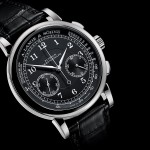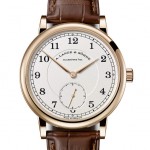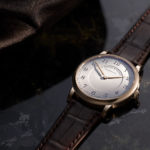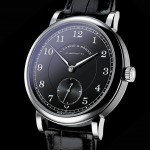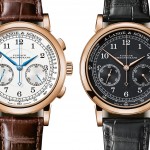Five Facts to Know About the Lange 1815, a Simple Watch with a Complex Story
Despite its simplicity, the A. Lange & Söhne 1815 is intriguing and diverse, being line of watches that encompasses both the first entry-level Lange wristwatch and also the most complex and expensive Lange watches ever.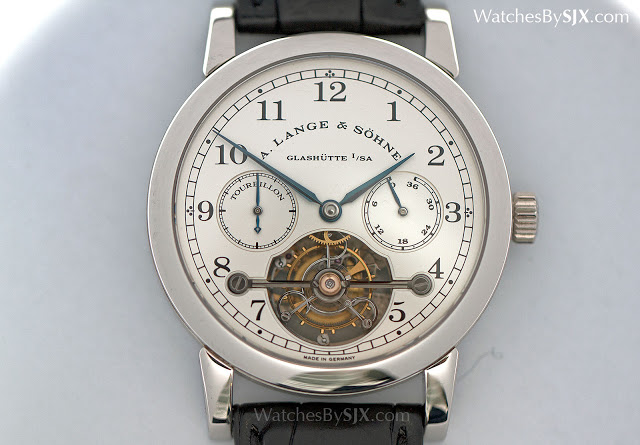
Named after the birth year of Ferdinand Adolph Lange, the namesake founder of A. Lange & Söhne, the 1815 is one of the most unusual model lines in the German watchmaker’s line-up. Originally introduced as the entry-level Lange in 1995, the 1815 is now a diverse collection of timepieces ranging from basic, time-only watches to the 1815 Rattrapante Perpetual Calendar. Despite being the simplest Lange wristwatch when it was introduced (though the 1815 has been succeeded in that respect by the Saxonia), the 1815 aesthetic actually originates with the Tourbillon Pour le Mérite when Lange was reborn in 1994. Now an exceptionally valuable timepiece, the Tourbillon Pour le Mérite (pictured above) was flagship wristwatch introduced by the then fledging firm, and it established the signature 1815 look.
Modelled on the vintage pocket watches made by Lange and its peers in the 19th century, the 1815 is distinguished by its Arabic numerals, railway minute track as well as the three dots marking each quarter. These elements are most often encountered on simpler timepieces like the 1815 Up/Down, but not always. Surprisingly, the 1815 look has also been applied to the two most expensive and complicated Lange wristwatches ever made: the Tourbograph Pour le Merite and the Grand Complication.
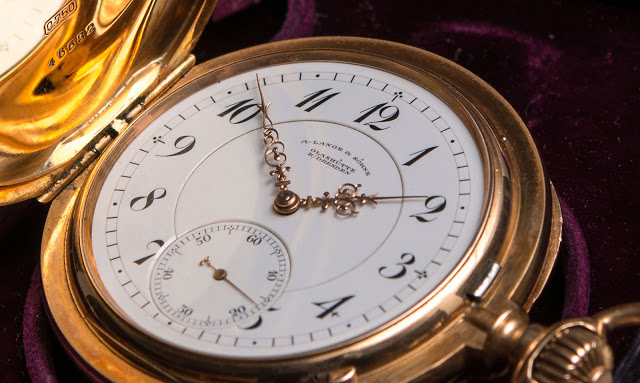 |
| An early 20th century A. Lange & Söhne pocket watch |
The most complicated Lange wristwatch ever when it made its debut in 2005, the Tourbograph featuring a tourbillon, split-seconds chronograph as well as a chain and fusee constant force mechanism. But the Tourbograph also features the distinctive 1815 look, right down to the triple-dot quarter markers.
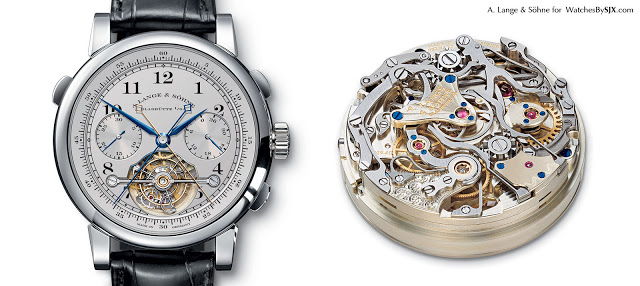 |
| The Tourbograph Pour le Mérite |
Two years ago the the Tourbograph lost its title to the Grand Complication, a monumental watch that is one of the most complex wristwatches ever. Inspired by a vintage Lange pocket watch with the same functions, the Grand Complication has a 876-part movement inside a 50mm case, boasting a grand and petite sonnerie, split-seconds chronograph with lightning seconds, and perpetual calendar. Priced at just under €2 million, the Grand Complication is nonetheless recognisable as an 1815; it is also the only 1815 model with an enamel dial.
.jpg) |
| The Lange Grand Complication from the front… |
.jpg) |
| And from the back |
The 1815 has come into prominence of late with 2015 being the 200th anniversary of Ferdinand Adolph Lange’s birth. A pair of 1815 limited editions have already been introduced for the anniversary – one in platinum and the other in honey gold – along with the new 1815 Chronograph boutique edition. With the two anniversary editions introduced so far being simple timepieces, neither has any complication, odds are that Lange will have one more 1815 in the pipeline, probably something much more complicated.
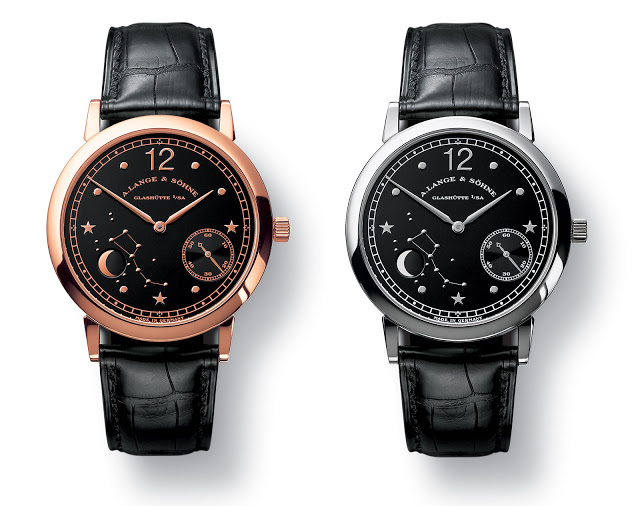 |
| The 1815 Emil Lange |
Limited edition 1815 watches are a return to form as Lange has used the 1815 as the base for several notable limited editions in the past. In fact, the 1815 has been the base for some of the most unusual Lange watches. The earliest was the 1815 Emil Lange moon phase, at the time the most precise moon phase on the market, accurate to within a day after 1000 years. More intriguing were limited editions created for retailers in Germany about a decade ago, when such retailer-specific editions were frequent.
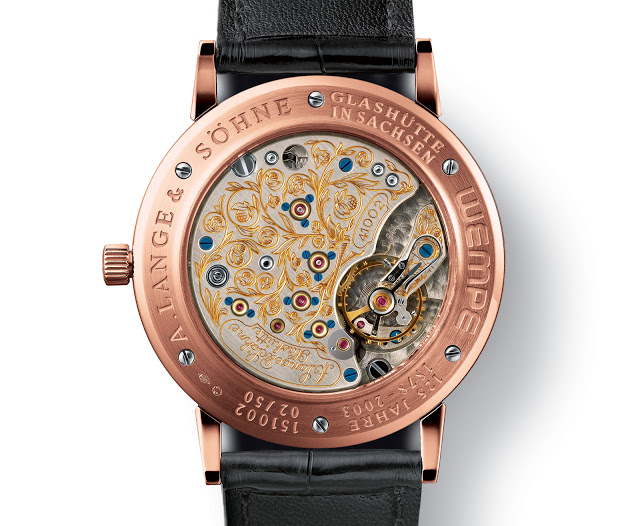
The 1815 Sidestep made for Wempe’s 125th anniversary in 2003, for instance, remains the only Lange wristwatch with a fully engraved movement. While all modern Lange watches have a floral hand-engraving on a balance cock, a detail taken from vintage Lange pocket watches, the Sidestep has its three-quarter plate similarly engraved with even the lettering hand-engraved.
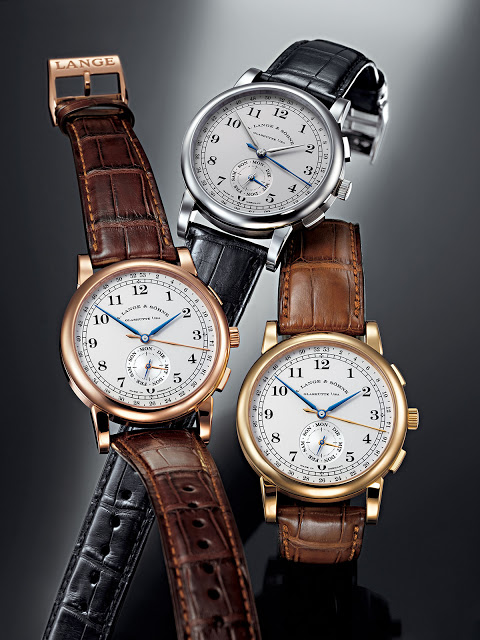 |
| 1815 Kalendarwoche |
Introduced in 2006, the 1815 Kalendarwoche for Munich retailer Andreas Huber (now taken over by Bucherer) is the only Lange wristwatch with a week of the year indicator. Widely used in German speaking countries for business and rarely elsewhere, the week of the year is indicated by a long central pointer.
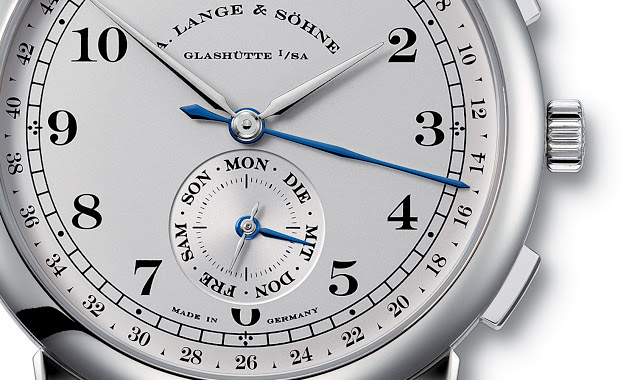 |
| The Kalendarwoche displays both week of the year and day of the week |
Also notable is the 1815 Cuvette for Oeding-Erdel, another German retailer. Though equipped with a simple automatic movement (making it one of the few self-winding 1815 watches), the Oeding-Erdel 1815 was fitted with a hinged case back (hence the cuvette moniker, meaning “pan” in English), along with an novel dial. Found only on a handful of Lange models, the hinged back later returned on the 1815 Up/Down Walter Lange limited edition.
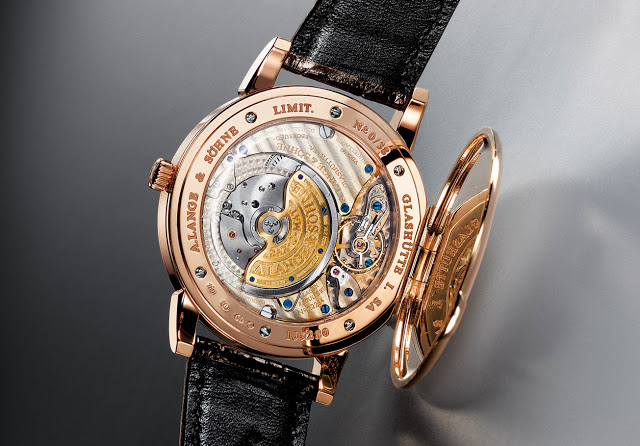 |
| The 1815 Cuvette |
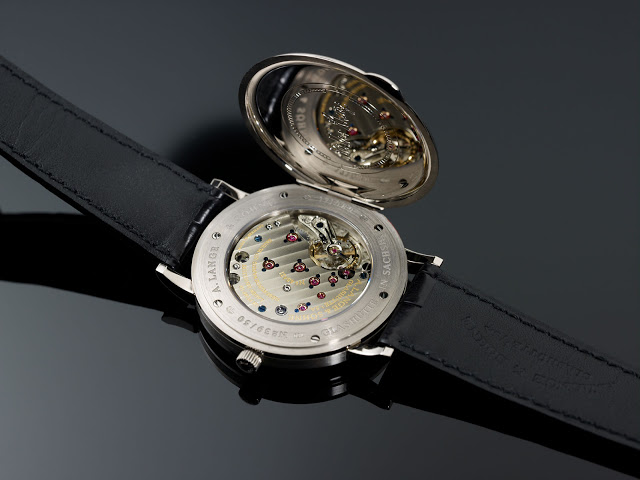 |
| The 1815 Up/Down Walter Lange |
Come December Lange will mark Ferdinand Adolph Lange’s 200th birthday in Dresden, the city of his birth and just 20 minutes from Glashütte. That occasion is almost certainly one that calls for an addition to the 1815 family.
Back to top.

